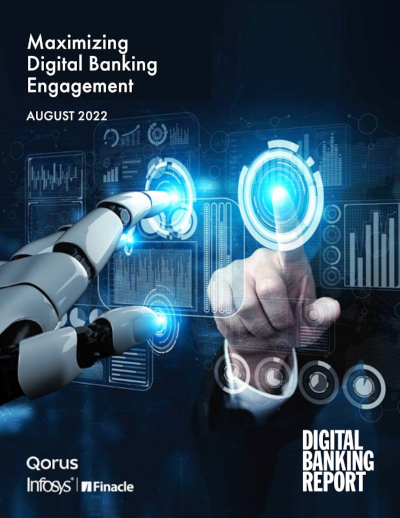Maximizing Digital Banking Engagement
Jim Marous
August 2022
: DBR 293
70 pages, 26 tables/charts
Download Printable Version of this page
For financial institutions, the accumulation of customer data empowers them to improve both the personalization and contextualization of content, creative, offers and overall experiences delivered. Done well, this higher level of personalization can improve satisfaction and engagement, providing a stronger value proposition that can positively impact loyalty and financial results.
According to Merkle’s most recent Customer Engagement Report, 86 percent of consumers prefer to receive offers that are personalized to their interests and browsing history. That said, only slightly more than half of consumers are willing to accept cookies as a matter of course, emphasizing the importance of developing a strategy to earn the trust of customers regarding the use of data and insights.
Our research shows that leading financial institutions are moving quickly to build a competitive advantage around the collection and use of data for delivering stronger value exchanges across the customer lifecycle. This includes real-time alerts, customized offers, relevant content, and a customer-centric approach that de-emphasizes traditional product sales models.
The process of customer engagement begins before the first sale is made and extends across the life of a relationship. Therefore, a financial institution must immediately illustrate a commitment to use collected data responsibly and for the ultimate financial wellness of the consumer. Each opportunity for a smart value exchange increases the willingness of the customer to share more data, providing the potential for a stronger relationship for both the financial institution and the customer.
Building a foundation for stronger customer engagement requires the development of goals and strategies around what data will be collected, what the consumer will receive in exchange for sharing their data, and how the value exchange will be delivered, Banks and credit unions should also build early use cases that allow for incremental wins that provide learnings to grow on.
Finally, there will need to be an investment in a modern data platform that will serve as the organization’s central data repository where all consumer, marketing and intelligence data is unified. This will often be built on a cloud-based architecture that enables speed, scalability, and uniform deployment.
The Maximizing Digital Banking Engagement report is published in association with Infosys Finacle and Qorus. This is an expansion on the Innovation in Retail Banking report published last fall that provided a springboard for this research. As financial institutions begin to realize that simply providing a good experience is not enough, the learnings from this report will become instrumental in building a better opportunity for customer engagement required for the future.
Maximizing Digital Banking Engagement
Advanced Analytics, AI, Analytics, Artificial Intelligence, Bank, Banking, Big Data, Credit Union, CRM, Customer Experience, Customer Engagement, Digital Banking, Digital Banking Transformation, Digital Lending, Digital Marketing, Digital Transformation, Engagement, Fintech, Innovation, Marketing, Mobile Banking, Payments, Personalization, Technology, Trends

